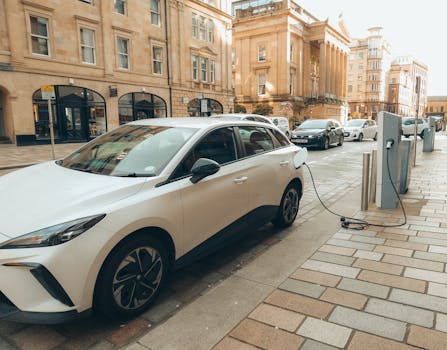Takeaways
The automotive landscape is set to undergo significant changes by 2025, with a strong focus on electric vehicles, advanced technologies, and sustainability. Consumers can expect a variety of new models featuring enhanced connectivity, autonomous driving capabilities, and innovative designs. Key players in the automotive industry are investing heavily in electric mobility, paving the way for a greener future.
Introduction to the 2025 Automotive Landscape
The Shift Towards Sustainability
The automotive industry is currently undergoing a massive transformation, and by 2025, we can expect to see a significant shift towards sustainability. With growing concerns about climate change and the depletion of natural resources, automakers are increasingly prioritizing eco-friendly practices. This includes the production of electric and hybrid vehicles, as well as a commitment to using sustainable materials in manufacturing processes.
As governments around the world implement stricter emissions regulations, manufacturers are being pushed to innovate. In this section, we will explore the key factors driving the shift towards sustainability in the automotive sector, and how these changes will impact the cars we see on the roads in 2025.
Innovations in Automotive Technology
Advancements in Electric Vehicles
One of the most significant trends in the automotive industry is the rise of electric vehicles (EVs). By 2025, we can expect to see a wider range of EV models available to consumers, with longer ranges and faster charging capabilities. Major manufacturers are investing billions into their EV lineups, aiming to compete in a market that is quickly evolving.
In addition to traditional automakers, new players are entering the market, offering innovative EV solutions. This section will delve into the advancements in battery technology, charging infrastructure, and the overall growth of the electric vehicle market.
Autonomous Driving Technology
Another area of significant innovation is autonomous driving technology. By 2025, we can anticipate that more vehicles will come equipped with advanced driver-assistance systems (ADAS) that enhance safety and convenience. Many manufacturers are working towards fully autonomous vehicles, which could revolutionize how we travel.
This section will cover the current state of autonomous driving technology, the challenges that remain, and the potential implications for the automotive industry and consumers.
Exciting New Models Set to Launch in 2025
Highlights from Major Automakers
As we look ahead to 2025, several key automakers have announced exciting new models that are set to launch. From luxury brands to budget-friendly options, the variety of vehicles will cater to a wide range of consumers. This section will highlight some of the most anticipated models, including their features, pricing, and expected release dates.
We will also discuss how these new models are reflecting the industry’s shift toward electric and hybrid vehicles, as well as the integration of cutting-edge technology.
Emerging Brands and Unique Offerings
In addition to established automakers, several emerging brands are making waves in the automotive market. These companies are often focused on sustainability and innovation, offering unique vehicles that stand out from traditional offerings. This section will explore some of the most exciting new brands and their upcoming models, including electric SUVs, compact cars, and more.
By examining these newcomers, we can gain insights into the future direction of the automotive industry and the changing preferences of consumers.
The Role of Government Policy in Shaping the Market
Government policies play a crucial role in shaping the automotive landscape. Incentives for electric vehicle purchases, fuel economy standards, and infrastructure investments all influence consumer choices and manufacturer strategies. In this section, we will analyze the current and upcoming policies that are expected to impact the automotive market in 2025.
Understanding these policies will help consumers navigate the evolving landscape and make informed decisions about their future vehicle purchases.
Consumer Preferences and Trends
Shifts in Consumer Behavior
As the automotive market evolves, so do consumer preferences. By 2025, we can expect to see shifts in what consumers value in their vehicles. Factors such as sustainability, technology integration, and affordability will play significant roles in purchasing decisions.
This section will explore the changing landscape of consumer behavior, including the rise of shared mobility solutions and the growing interest in subscription services for vehicles. We’ll also discuss how these trends are impacting manufacturers and their offerings.
The Importance of Connectivity and Infotainment
Today’s consumers are increasingly looking for connectivity and advanced infotainment systems in their vehicles. By 2025, we anticipate that these features will be standard across many models. This section will discuss the latest trends in in-car technology, including smartphone integration, voice recognition, and entertainment options.
We will also examine how manufacturers are responding to consumer demand for enhanced connectivity and the implications for the overall driving experience.
The Global Automotive Market in 2025
Market Trends and Predictions
The global automotive market is set to grow significantly by 2025, with various factors influencing this expansion. From the rise of electric vehicles to the impact of the pandemic on consumer behavior, several trends are shaping the market. This section will analyze these trends and provide predictions for the automotive market in 2025.
We will also focus on specific regions, including the UAE, and how local market dynamics are influencing the adoption of new technologies and vehicles.
Challenges Facing the Industry
While there are many exciting developments in the automotive industry, challenges remain. Issues such as supply chain disruptions, semiconductor shortages, and fluctuating raw material costs can impact manufacturers’ ability to deliver new models. This section will discuss these challenges and how they may affect the availability of new cars in 2025.
Understanding these obstacles will provide consumers with a clearer picture of what to expect in terms of vehicle availability and pricing.
Conclusion
As we look ahead to 2025, the automotive industry is poised for significant change. With a focus on sustainability, technological advancements, and evolving consumer preferences, the landscape is set to transform dramatically. By exploring these trends and innovations, we can gain insights into the future of mobility and the exciting new cars that will be hitting the roads.






